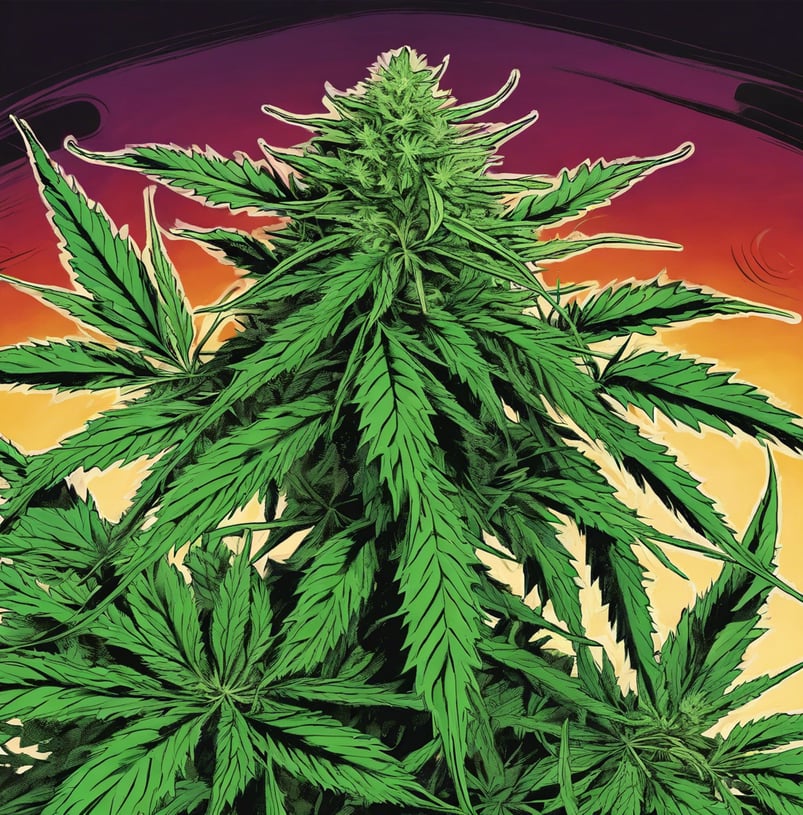Cannabis Sativa: From Ancient Origins to Modern Cultivation
Cannabis Sativa has a rich history that spans thousands of years. From its origins in East Asia to its widespread use across the globe, the plant has played a crucial role in various cultures.
6/2/20242 min read


Welcome to our journey through the fascinating history and cultivation of Cannabis Sativa. Originating in the ancient lands of East Asia, particularly around the northeastern Tibetan Plateau, this remarkable plant has been a part of human history for over 12,000 years.
Archaeological evidence suggests that Cannabis Sativa is one of the oldest cultivated crops. It spread across the globe through human migration and trade, intertwining with the histories of diverse cultures.
Cannabis Sativa is an annual herbaceous plant that can grow up to 5 meters tall. Thriving in well-drained soils with abundant sunlight, this dioecious plant, meaning it has separate male and female plants, is known for its rapid growth and resilience.
In ancient China, Cannabis Sativa was cultivated as early as 4,000 BCE. The Chinese, particularly in the Yellow River Valley, utilized hemp fibers for textiles, ropes, and paper. The Han Dynasty (206 BCE – 220 CE) documented its medicinal uses, employing it in treatments for pain and illnesses.
In India, Cannabis Sativa holds a sacred place. Known as 'bhang' or 'ganja,' it was used in Ayurvedic medicine and religious rituals. The Atharva Veda, a sacred Hindu text dating back to 1,500 BCE, mentions cannabis as one of the five sacred plants. It was believed to be a source of happiness, a joy-giver, and liberator.
In ancient Persia, Cannabis Sativa was an integral part of Zoroastrian rituals. Known as 'bangha,' it was used in spiritual ceremonies to induce visions and communion with the divine. Persian texts like the Zend-Avesta, written around the 6th century BCE, highlight its religious significance.
By the early centuries CE, Cannabis Sativa had spread to the Middle East through trade routes. It became a staple in the Arab world, where it was used for both its medicinal properties and recreational purposes. Medieval Arab physicians like Avicenna included cannabis in their medical compendiums.
Cannabis Sativa reached Europe by the early Middle Ages. Monks and scholars in medieval Europe used hemp to produce parchment and textiles. It was also noted for its medicinal properties in texts like the 'Herbarium' of Apuleius Platonicus, written in the 5th century CE.
Despite its historical significance, Cannabis Sativa faced legal restrictions during the 19th and 20th centuries due to its psychoactive effects. However, recent decades have seen a resurgence in its cultivation for medicinal and recreational use, backed by advances in genetic research revealing its therapeutic potential.
Cannabis Sativa is incredibly versatile. Its fibers are used in textiles, ropes, and paper. The seeds provide nutritious oil and protein, and medicinally, cannabis alleviates symptoms of chronic pain, epilepsy, and multiple sclerosis. The psychoactive component, THC, is utilized both recreationally and therapeutically.
Commercial cultivation of Cannabis Sativa requires specific conditions for optimal growth. Ideal temperatures range between 20-30°C with a relative humidity of 40-70%. The plant thrives in well-drained, nutrient-rich soil with a pH between 6.0 and 7.0. Adequate lighting, whether natural or artificial, is crucial for maximizing growth and yield
Cannabis Sativa has a rich history and versatile applications. Its commercial cultivation requires careful attention to growing conditions, nutrient and pest management, and advanced greenhouse technologies. Understanding and implementing these practices can significantly enhance yield, quality, and sustainability in cannabis production.
Contacts
bart@smokyb420.com
(+27) 084-717-2943
